Using Backlinks For SEO – A Complete Guide
Join the 1,000+ brands that trust us for their link building.
Backlinks are among the most important ranking factors in SEO for helping websites increase their visibility, traffic, and revenue.
Most sites that are ranked on the first page SERP will likely have a variety of quality backlinks (i.e. a diverse link profile). This is because there’s a strong correlation between a website’s organic traffic and visibility (i.e. ranking) in the SERPs and the number of good links pointing to it from other relevant and authoritative websites.
The main purpose of search engines like Google is to offer its users the best and most relevant web pages based on their search queries. One way to determine the quality and worthiness of a site’s content is for Google to analyze the website’s backlink profile (which is the collection of inbound links pointing to the domain).
Backlinks to your site act as votes of confidence from other domains and signal to Google that your site is credible, authoritative, contains quality content, and probably deserves to get ranked in the SERP (the best get pushed to the top of the first page).
Since the essential goal of SEO is to maximize visibility and search ranking, it makes perfect sense to understand what backlinks are and whether they are actually useful for improving site performance.
What Are Backlinks?
Backlinks, also known as “inbound” or “incoming” links, are web addresses (i.e. URLs) that link web pages from different domains together. The website or web page that has backlinks pointing to it is receiving inbound links from another referring domain.
In other words, if you decide to link out to another website or web page, that site is receiving a backlink from you and your site is its referring domain. Backlinks are an integral component of web search because they facilitate referral traffic and send users to pages of interest.
The creation of backlinks through the process of linking web pages and redirecting traffic provides the valuable “vote of confidence” signals needed by Google to determine a page’s rank-worthiness in the search engine results pages.
A domain can acquire backlinks from a multitude of sources. It’s very important to understand or at least be aware of the different types of backlinks out there and how they can be incorporated into SEO strategies.
(Some procurement channels like outsourcing Fiverr backlinks can be cost-effective quick wins only if you make sure you’re actually getting quality links).

You want your website or target page to contain linkable assets like relevant blog posts, images/videos, and other content that people want to view and share. These linkable assets play a big part in generating backlinks from other sites.
Backlinks are important in general, regardless of SEO efforts, because they provide references to other useful information about a product or topic of interest.
In regard to SEO, backlinks are important because they help determine a site’s domain authority and ranking.
Individual backlinks can be powerful and important by themselves, but a site’s link profile is the bigger structure that needs attention and constant improvement. A link profile is a collection of backlinks pointing to a web page or domain. It’s essentially a footprint that can be traced by Google algorithms when they analyze the relevance and quality of a website.
A site’s performance in search engines will benefit from a link profile that’s as natural as possible (more on this in a bit). Websites with a diverse set of quality backlinks (i.e. strong and natural) usually perform better in the SERPs, get more organic traffic, and reach target audiences more successfully.
Quality Links Vs. Spam/Low-Quality Links
Let’s talk about what makes a quality link.
By now you should grasp that backlinks are major ranking factors that are essential for the whole web search thing. However, there is a considerable amount of misunderstanding as to what constitutes a high-quality backlink.
So what are “quality backlinks” and which of them are useful for improving rankings? We will share with you a very handy framework for assessing the overall quality of a link as well as provide some general examples of these links. Then we’ll go over some spam/low-quality links (the ones you need to avoid or disavow).
High-quality backlinks can be a conduit for passing authority from an external site (i.e. the referring domain) to yours. This will only improve your website’s search ranking over time. You want as many of these authoritative backlinks pointing to your domain as possible.
This domain authority is part of a framework we call The Holy Trinity, which is a set of major attributes/metrics that determine a backlink’s overall strength and quality. The overall quality of a link profile can be generalized by the composition of backlinks containing these quality factors of the Holy Trinity.
The Holy Trinity of Backlink Quality
The Holy Trinity is composed of three attributes/metrics: Relevance, Authority, and Power.
These attributes are somewhat quantitative in the sense that a backlink can have more or less of either one. The more of these factors a backlink has, the better and more valuable the backlink is to your link profile. But it’s a bit more complicated.
First, you don’t need to have a high amount of all three metrics. A backlink can have very high relevance but low authority and power. Its high relevance still makes it a quality link.
Moreover, a link can be very authoritative (e.g. it comes from a high-ranking, trustworthy website) but relatively low in power and relevance. It helps to think of the value of these attributes as a balance or lever — the more of one factor a backlink has, the less of the other two factors are needed.
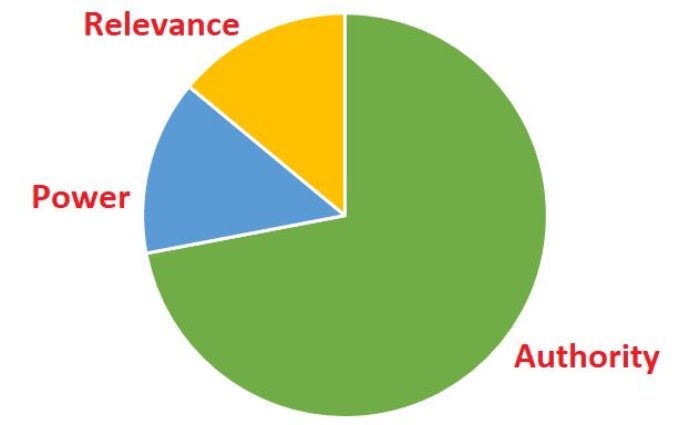
In a perfect situation, all of your backlinks would have very high amounts of each factor and your link profile would be the envy of SEOs everywhere. Does that sound natural to you? In reality, most natural websites will show a wide variation of Holy Trinity metrics (yet most of the links will be helping the site to rank).
There aren’t many scenarios in which a new domain can suddenly acquire a bunch of relevant, authoritative, and powerful links without drawing attention from Google algorithms. So you should be satisfied with getting at least some of each factor and know that they are better than having none at all. Let’s go over them in greater detail:
Relevance
A backlink is relevant to your site if the on-page factors of the linking page are related to whatever the backlink is pointing to. In other words, is the page (that’s containing the backlink) relevant, in terms of SEO, to your receiving page? Common sense, really.
Keep in mind that content, one of the most important ranking elements of a website, is part of the on-page SEO of a referring page. Specifically, what keywords are positioned in that content, along with being included in the linking page’s domain, URL, meta description, SEO title, anchor text, and h tags.
Are the same or related keywords found in your site’s on-page? If so, then your page is considered relevant to the linking page and you have a relevant backlink.
Example: a page that’s optimized for real estate brokerage in a specific geographic location points to a page that’s trying to sell some local property in the same area.
We’ve actually written a dedicated article about backlink relevance that comes with a video walkthrough for those of you who really want to dive deep into the concept.
Remember, relevance is not the most important factor of the Holy Trinity. You can have a non-relevant link that’s still valuable if it’s authoritative or powerful.
Authority
Authority is the overall strength of a domain’s collection of backlinks (i.e. strength/quality of its link profile), including more obscure notions such as trust.
A perfect example of a very authoritative backlink would be from a website like The Wall Street Journal. WSJ.com has a gargantuan link profile as you can see in this image. Notice how multiple backlinks can come from a single referring domain (which is why there are always more backlinks than referring domains).

These backlinks are pointing to all of the web pages in the WSJ.com domain. Tools like Ahrefs provide quantitative metrics like “Domain Rating” (DR) to signify how authoritative a domain is. Other tools, like Moz and Majestic, call it DA or CF/TF. They also allow you to see what types of backlinks are pointing to each page in a domain (and deeper analysis).
Why does The Wall Street Journal have such a high DR and a massive amount of backlinks? Because Google sees WSJ.com as a very trustworthy source of quality information/content and so do nearly a million other websites linking to it. That’s why WSJ.com is consistently ranked at the top of the SERPs.
Can’t get any incoming links from behemoth websites like WSJ.com? That’s okay! Most sites can still perform well while never receiving highly authoritative links. Remember the other two ranking factors, relevance, and power, are just as important too.
Power
A backlink’s power is a straightforward metric that’s represented by the total amount of backlinks (as well as the quality of those backlinks) which are pointing to a single page that contains the backlink.
In other words, power applies the concept of authority to a single page instead of an entire domain.
Consider all the various types of backlinks pointing to a particular web page on a domain. If that page has a strong and diverse link profile, then a single backlink from that page (i.e. outbound link) may be considered powerful and “pass that power” (i.e. link juice) to your site.
This happens because not all pages on a site are equally valuable. Some pages are simply more powerful than others and receive a lot more backlinks (such as when they have relevant and useful content).
Sometimes a powerful linking page can include many outbound links to other sites. It’s unknown exactly how that power is distributed over all the page’s outbound links, but it’s safe to assume that each link is probably less powerful as more total outbound links are placed on the page.
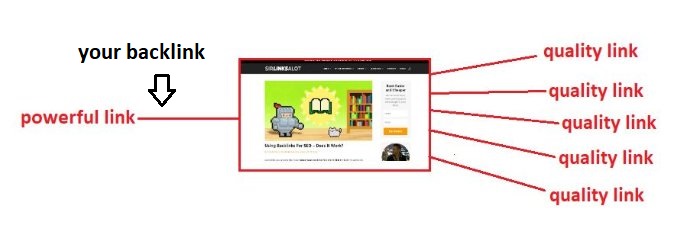
Example: one website that publishes a wide variety of blog posts can include a particular article that’s receiving a bunch of quality links from many referring domains (maybe the article’s topic is trending or the content is extremely insightful).
The blog domain may not be a very popular or respected site as a whole, but it just happened to publish a very popular and respected post. A single powerful link coming from that blog post can add a lot of value to your site.
Remember, a natural website should have a healthy balance of low and high from each of these three metrics.
It’s also worth mentioning two other related metrics: Traffic and Ranking:
Traffic refers to the organic traffic of a linking page or referring domain. Ranking refers to the linking page or site’s ranking on the search engine results page. Obviously, you stand to gain from a linking page/domain that is doing well in both of these terms. Always choose a link from a site that has traffic/ranking over one that doesn’t.
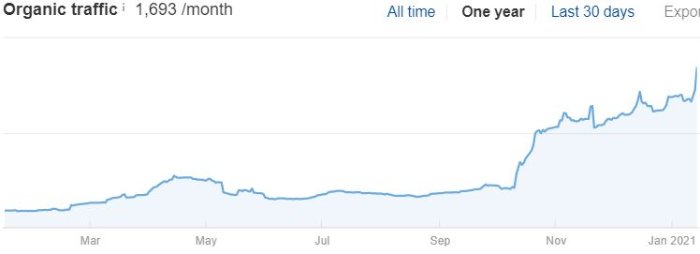
Link Diversity
A related concept that really deserves its own dedicated post is the notion of backlink diversity. We really encourage you to check out our article on link diversity to learn more.
Simply put, link diversity is related to The Holy Trinity because it has to do with utilizing a variety of different backlinks to build a diverse link profile that leaves a random footprint that Google algorithms cannot easily track or penalize.
Link diversity is also related to naturalness, which is the idea that websites should appear or behave in a normal or ethical manner. They should not be associated with spam links, low-quality content, or tactics that aim to manipulate search engines.
The assumption regarding link diversity is that natural sites with truly link-worthy content will tend to naturally acquire a wide variety of backlinks from different types of domains.
It’s best practice to build links from a variety of sources, positions on pages, domain ages, power/authority levels, etc. For example, it’s very easy for algorithms to notice that the majority of your links are coming from user-generated content (which is spam in many cases) or PBNs (since PBN links are positioned on the homepage).
Let’s now discuss the two general categories of quality links:
Pillow Links & Pushing Links
Most backlinks can be further categorized by their intended purpose as either “pillow” or “pushing” links.
Pillow Links
Pillow links are foundational links intended to establish, insulate, and protect a website. They comprise a variety of good white-hat backlinks that will, at the very least, enhance trust with Google. Building or acquiring pillow links is a good strategy to start out with if your website is new and doesn’t have any backlinks.
Pillow links include citations, social profiles, niche directories, Web 2.0s, social signals, forum profiles and more. They don’t provide a lot of ranking power, but they do help to diversify a link profile in a good way.
Pushing Links
Pushing links are important backlinks designed to “push” your pages to the top of the SERPs. They are the backlinks that provide raw ranking power and are generally more difficult to build (or more expensive) than pillow links.
Pushing links include authority links, guest posts, niche edits, and PBN links. Each is a bit different and very useful.
Believe it or not, there are some risky links (or shitty in some cases) that need to be avoided as much as possible or only utilized in a tactical way with skillful expertise. Let’s briefly go over these now:
Different Types of Low-Quality/Spam Links
You don’t want to deal with these backlinks unless you’re a skilled SEO who knows exactly how to use them.
Links from outdated or shady looking websites
Although Google bots may not know exactly what an old, untrustworthy, or “shady” website looks like on a superficial level, most human users can tell after visiting a site for a minute if it’s shady or not.
You may still get decent backlinks from a site like this, but why risk being affected by unseen factors if you can just choose another site that you already know is high quality.
Lots of outbound links from a linking page
It’s not a good signal to Google if your backlink is just one of 750 other links coming from a single referring page. First of all, it’s unnatural for a page to link out hundreds of times. Just imagine how spammy the content would be if it was constantly referencing other websites.
Nobody knows exactly how harmful it is to receive a backlink from a linking page as described above, but it does appear manipulative/fake and should simply be avoided.
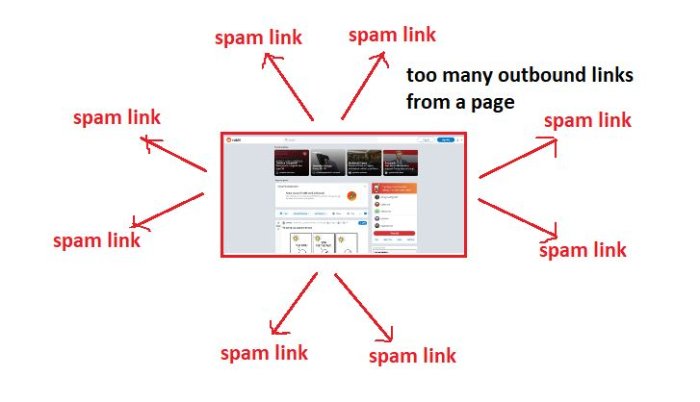
Auto-Generated Links
These links can be automated by software or created by users (user-generated content). Avoid these links unless you’re a black hat SEO pro. Auto-generated links that use keyword-rich anchor text with slight variations can be created very easily and can also damage your rankings/link profile.
Spun Content
This is low-quality content that takes old content and regurgitates it with variations of keywords, sentences, or phrases to create the appearance of new content. You should avoid links from spun content and thin content (low word count or useless information).
Non-Relevant Links
Having too many backlinks from irrelevant websites will harm your rankings over time. If your goal is to be highly relevant in a niche, then you need links related to your niche.
Aim for non-niche links if you just want random link juice from any type of website. Referring back to the concept of naturalness, it’s simply unnatural or manipulative for a niche site to receive a bunch of links from totally unrelated sites.
Negative SEO
Sometimes in competitive niches, other SEOs or website owners will deploy malicious backlinks that point to your site with the intention of harming your rankings. This is called negative SEO and it’s a nasty and common aspect of the business of search engine ranking.
An example of a negative SEO attack would be someone using shady sites to link out to your domain using outbound links with very shady, or even illegal, anchor text subjects. Another example could be DDOS attacks that aim to crash your website or slow it down with spam requests.
Remember to disavow any suspicious or low-quality links that you think may excessively harm your website. You can do this through the Webmaster Disavow Tool page in Google Search Console.
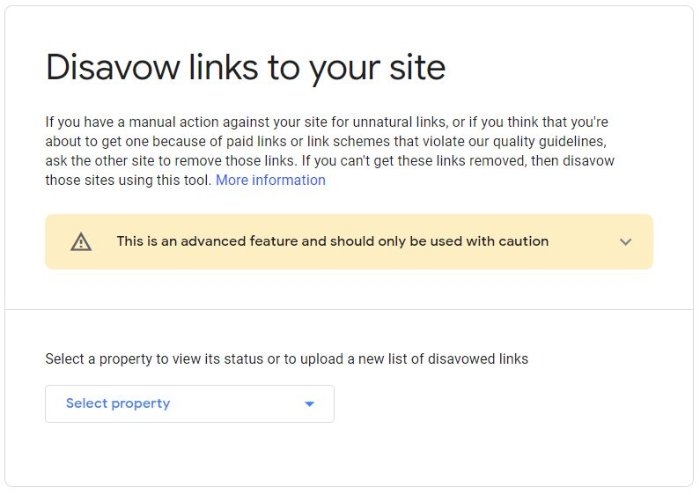
Types of Backlinks
You understand that backlinks can be either good or bad (and to avoid the ones that you’re unsure of how to use safely). You also know how to get a good sense of the quality of a backlink by applying the Holy Trinity framework, and how to categorize links based on their intended purpose.
Now let’s take a quick look at some other specific types of backlinks that are considered useful with respect to ranking and link diversity:
DoFollow Links
“Dofollow” is a URL’s default SEO attribute that tells algorithms to count the link towards any search ranking assessment. Many links are dofollow and they’re important for SEO because a website needs them to be considered for ranking purposes.
NoFollow Links
The “Nofollow” attribute was created to deal with links that add no value like spam and self-promotion. You can make a link nofollow by adding an HTML tag to the hyperlink. This will tell Google to ignore the link and not give it any ranking weight.
It’s natural and recommended for a site to have a mix of dofollow and nofollow links.
Authority Links
Authority links are strong dofollow backlinks that are deployed to help push a website in the SERPs by boosting ranking power, authority, and relevance factors.
They include several of the links described in this list: niche edits, guest posts, editorial links, and PBNs.

Niche Edits
These authority links are contextually placed into relevant, pre-existing articles. These niche articles are aged with pre-existing link profiles to draw value from.
Guest Posts
Guest posts are high-quality contextual links that can boost your rankings a lot. They’re a popular and effective way to build links.
They are created when an author makes an agreement with a webmaster whereby the author/content writer is allowed to publish a useful article to the webmaster’s blog in exchange for a contextual backlink from the blog post/published content.
Editorial Links
These authority links are similar to guest posts, but harder to obtain and more expensive because they come from content that is commissioned for highly authoritative domains like news publishing sites. An example would be a blog post in the New York Times.
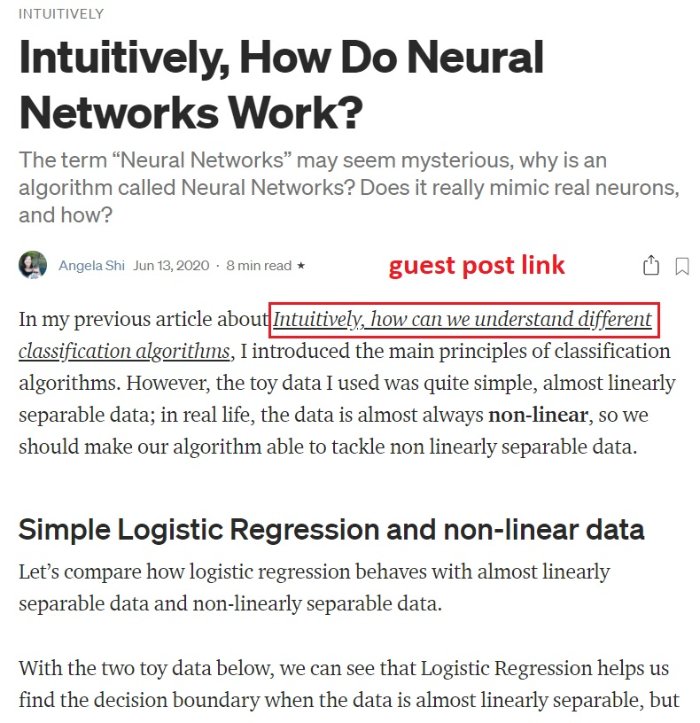
PBNs
PBN links are contextual authority links positioned on the homepage of private blog domains which are designed or repurposed to pass link juice and power to target/money sites.
Contextual Links
You see these common types of links everywhere. They usually appear in the body of main content, like the text paragraphs of a blog post, and derive or pass value from the relevant (i.e. contextual) information surrounding them.
They can also be positioned in other web page areas like the sidebar, menus, or widgets.

Directory Links
Web directories like online lists, catalogs, coupon sites, and business directories are places to utilize these pillow links. Directory links are useful for content marketing and advertising your brand in niche markets.
Blog Comments
These pillow links can help diversify your backlink profile. You simply need to write a comment on a blog post and leave your link in the metadata, details or content body. If possible, your profile name can be used as the anchor text for a link.
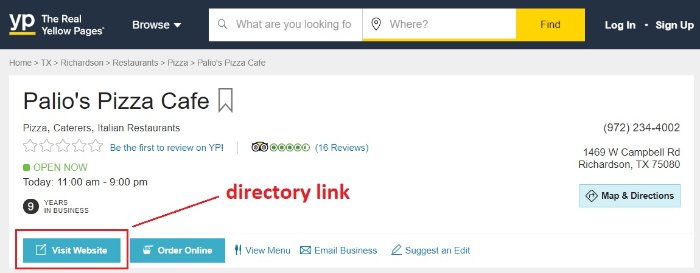
Social Signals
Social signals are social media metrics that signal the popularity or relevance of specific and shareable content. Typical examples include likes, shares, comments, and views.
It’s quite common for popular content/websites to be discussed and shared, so link building with social signals is about creating trust and naturalness.
Citations
These are really good pillow links because they’re free, natural, and relevant for target niches or locations (depending on the listing directory).
Citations are like directory links except they include a name, address, and phone number along with the website link.
That just about covers most of the quality links you’ll ever need. You can learn more from our comprehensive article about types of backlinks.
How Do Backlinks Affect SEO?
Backlinks are the most important ranking factor for websites, and digital marketers/SEO professionals require high-quality backlinks to improve their page rankings in the SERPs and direct traffic to their sites. That’s how backlinks are related to SEO in a nutshell. But let’s discuss this in greater detail.
Recall that search engine optimization is essentially about maximizing the visibility of websites and pages in the search results. It’s also about maximizing traffic and site revenue.
A site needs to be authoritative and relevant for a keyword/topic to rank in the search results. Backlinks help to signal a vote of confidence in your site from other websites. This is necessary for search engines to determine whether your site truly is authoritative or relevant for specific keywords or topics that other sites have in common with yours.
If you get more quality backlinks from other sites, then search engines like Google will reward this perceived value by delivering your content to the SERPs where it will gain the visibility and organic traffic sought after by webmasters, business/site owners, and marketers alike.
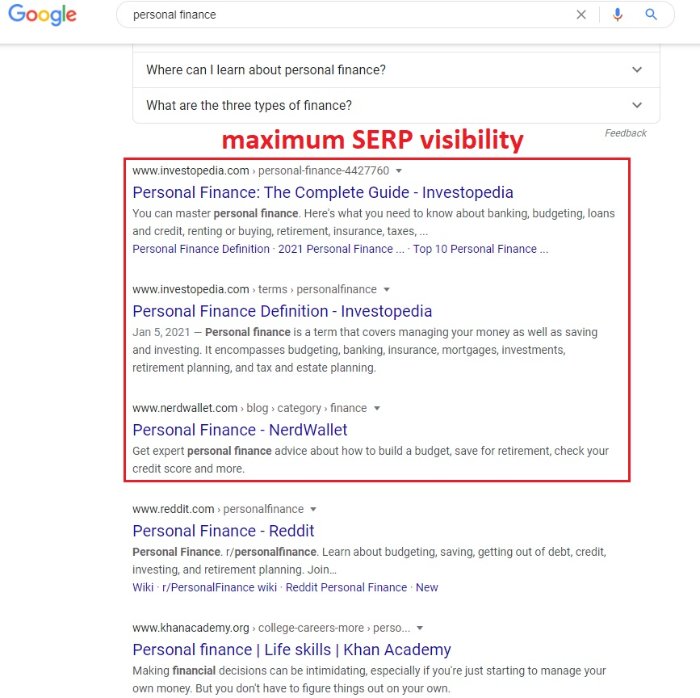
The sheer quantity of backlinks pointing to a domain used to be a strong ranking factor in the past when ranking was much easier and search engine algorithms were much simpler. Now algorithms are considerably more sophisticated and capable of analyzing hundreds of factors to assess the overall quality of a link.
SEO strategies have had to be refined and retested countless times to keep up with and outsmart these algorithmic updates.
Quality is more important today than it’s ever been whether it’s a website’s design or its content. This includes quality backlinks too, which are natural links that direct users to the most relevant and useful content (or boost a page’s ranking in other ways). Google wants to display the best, most relevant, and trusted content for a given topic in its search results. Backlinks help in this determination.
The more quality backlinks an SEO strategy can build to a website, the more valuable that site will appear to Google and the more likely it will perform better in the SERPs. In fact, studies have shown that there is a strong correlation between a site’s organic traffic/ranking and its total number of backlinks/referring domains.
Ways To Get Backlinks
This section is going to provide a simple and straightforward guide for getting started with quality link building. We highly recommend that you also check out our SEO Round Table Office Hours article on the best ways to build links for SEO, as it provides solid strategic advice for beginners and high-level planning principles.
Now, remember that quality is almost always better than quantity when it comes to getting backlinks. You can’t just trivially increase your number of backlinks without focusing on quality and expect to be successful in a competitive niche.
It’s best practice to build a diverse set of natural and quality links which are tied to great content and trusted, relevant websites.
There are four methods of acquiring backlinks for your website:
Earn
Earning links is the most organic or natural way to get backlinks. It refers to other users or webmasters that discover your content through a search engine, hyperlink, word of mouth, or social media mention and voluntarily link to your site because they liked your content or found it useful.
Create
Creating links refers to manually adding external links on other websites like web directories, blog comments, forums, etc. They tend to be low impact pillow links (i.e. quick wins) because there’s no simple or cheap way of adding powerful authority links anywhere you want without forging relationships, creating quality content, owning existing assets, or buying them.
Build
This method takes the most effort because it involves reaching out to webmasters, editors, or business/site owners and persuading them to link to your site. The key is to show them that you can add value to their digital assets and that your domain or pages are worth linking to. Examples include guest posts, shareable/relevant content, unlinked mentions, and broken link building.
Buy
Buying backlinks can be the most effective link building method for those who don’t have the time or inclination to create or build the links themselves. Link building specialists can devise a strategy that targets your needs and do all the dirty work for you.
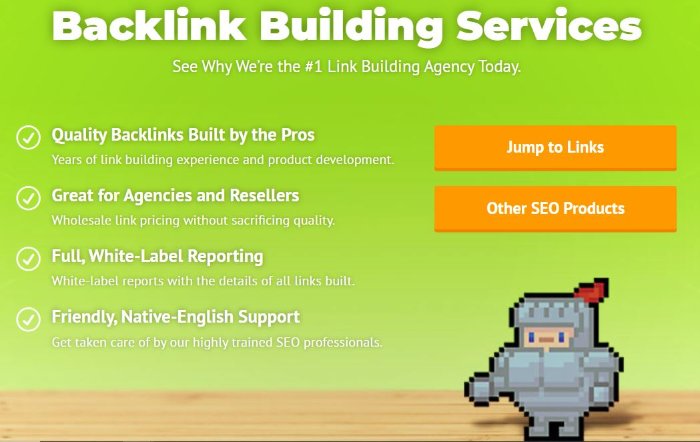
Figuring out ways to get quality links without breaking the bank is a hot topic in the SEO community. Even though it’s true that authority links (guest posts, niche edits, PBNs, editorial links) are expensive or take years to acquire, there are plenty of free backlinks that can help you out a lot.
Here are some examples of each method (including free ones):
Use your blog section to post great content
Your website’s blog section is a great place to post a link-worthy piece of content/article that is engaging and informative. It’s where you can show your expertise for a niche or promote products and services.
Guest blogs and editorial links
Making guest posts on popular niche websites or content blogs is one of the best ways to get link juice going to your site.
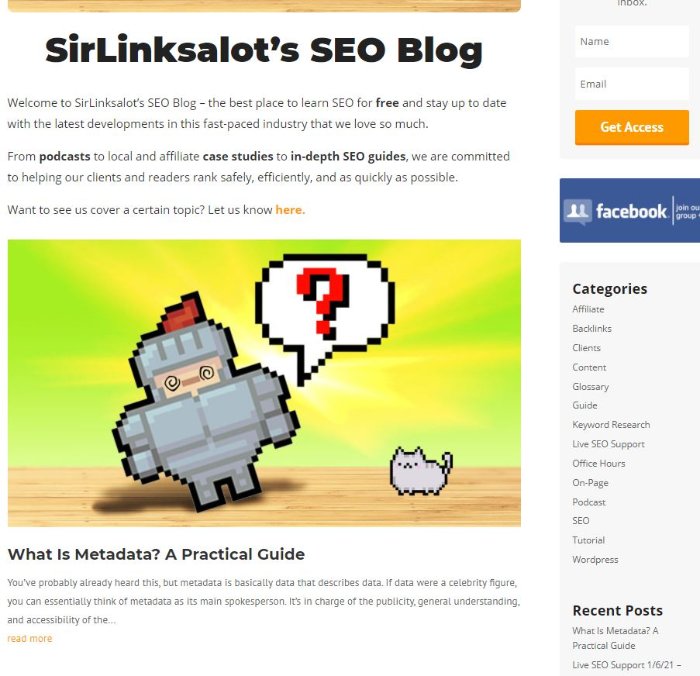
Make infographics, memes, and other shareable content
Some of the most shared content on the web are images, memes, and videos. You could get dozens (or hundreds) of backlinks to your website if any of them go viral.
Use FAQs and resource pages to answer questions
Users surf the internet to find answers to questions. If you can provide useful information resources, these pages could be linked to by other sites wanting to share insight into niche topics or products.
Post comments on blogs
It’s natural to post useful or relevant comments/information on blog posts. It’s also a free and easy way to link to your site.
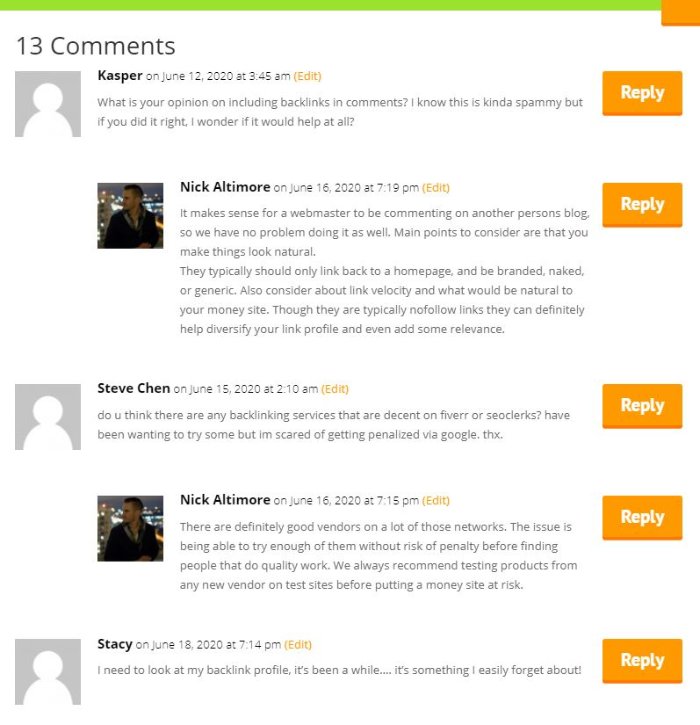
Submit your website to directories, forums, and social media profiles
A natural and free way to build brand recognition and advertise to a target audience, submitting your website (with a link) to social networking sites, forums, and niche web directories is recommended.
Fix broken links and find unlinked mentions of your brand
Broken link building is the process of replacing a broken link with one of your working backlinks. And sometimes other websites mention your brand or product without linking to you. You would want to contact the webmaster and see if you can get a link back to your site.
Buy powerful backlinks from SEO specialists
Third-party link building specialists are a great way to get high-quality links on a consistent basis, especially if you’re trying to scale up aggressively. They offer many types of backlinks, reduce your risk, and save you a lot of time.
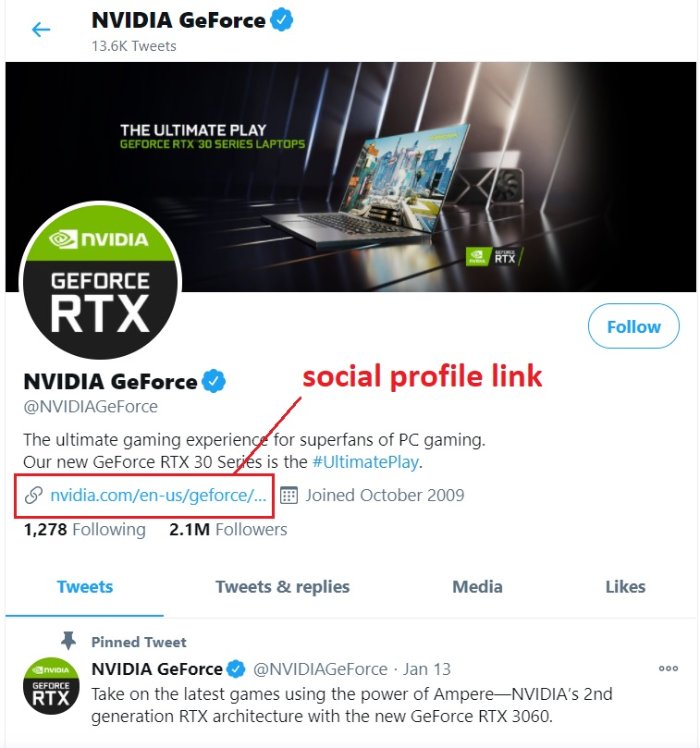
Precautions To Take When Building a Backlink Profile
It’s important to be realistic about your budget and time in the beginning. Unless the plan is to buy backlinks from a third-party agency, beginners should plan out their link building efforts for the long term. It can take several months or years to build a quality link profile from scratch, and it’s easy to spend all of your investment capital and give up too soon.
Having said that, there’s plenty of advice we can share on what to look out for to stay safe and be effective when building backlinks, so let’s continue.
People have been trying to manipulate search engine rankings ever since search engines came into being. They still do. And Google algorithms are becoming smarter at detecting and penalizing them. So the first piece of advice, if you’re new, is don’t jump in with the mindset of trying to game or manipulate the system.
For example, spamming irrelevant links is a big red flag when backlinking. It’s not a good idea to spam out links (on forums, for example) that just try to get users to buy things or visit irrelevant pages (even though it’s really easy to create them).
Auto-generated links (e.g. user-generated content) are a kind of spam link that don’t offer much value and degrade the user experience for web surfers. Duplicating a piece of content using the same backlinks on several websites is also a bad idea.
Try to avoid getting too many low-quality links from weak domains and shady niches. You need to focus on getting high-quality links from authoritative, trusted sites.
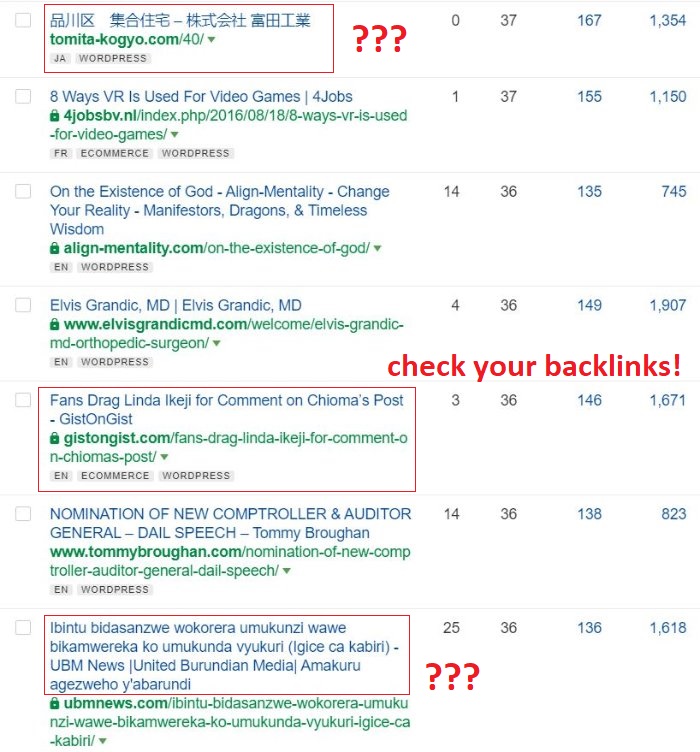
The recommended strategy is to build a high-quality website from the beginning and invest in links that will stand the test of time. You can avoid a lot of costly penalties that will set you back if you play smart in the beginning (see: Google penalties).
Focus on creating great and original content! Content is king these days.
Performing regular SEO audits is highly recommended to help avoid penalties. There are hundreds of things that Google can penalize your website for. But don’t worry too much as you’re not expected to identify them all and you don’t need a flawless website to rank. You just need to address the penalties as soon as they happen.
Keep in mind that a website’s SERP performance is often relative to its direct competition. Your niche competitors may be getting penalized too because very few websites are perfect. You need to focus on analyzing your competitors. Try to emulate the link profiles and site structures of the top-performing ones in your niche.
There are lots of things to audit when a site gets hit with automatic penalties (manual penalties are reported to you in Google Search Console). Protecting yourself ahead of time to avoid some of these pitfalls will go a long way.
We have another article that explains in detail all of the bad things that can affect your site’s performance (some of them as a result of poor link building decisions and bad SEO). You should check it out to learn more about taking precautionary measures.
Meanwhile, here are some quick suggestions on how to avoid common issues that get penalized:
- Remove or disavow spam, unnatural, and shady links to your website
- Remove or forbid spam posted by users
- Remove or forbid auto-generated content
- Always publish high-quality, original content
- Follow on-page SEO best practices
- Decrease load times and improve your UX
- Remove duplicate content
- Minimize keyword stuffing
- Diversify your anchor text
Google’s Webmaster Guidelines is a great resource for learning more about building and maintaining a quality website.
Should You Use Backlinks?
Obviously, we highly recommend using backlinks for SEO whether you choose to build them with white-hat tactics and shareable content or buy them from reputable vendors.
Need more reasons why you should use backlinks? Let’s go over the main benefits:
Improve your search rankings
Remember that Google counts the number of quality backlinks/referring domains linking to your website. Quality links improve your site’s perceived authority and ability to provide great information to search engine users. This perceived increase in value is rewarded with higher rankings in the SERPs.
Increase organic and referral traffic
Organic traffic is when users visit your site by natural methods like a web search or following a link. A good backlink on a relevant niche site (with a dedicated target audience) can generate a lot of referral traffic.
So users can be redirected to your site from other content on the web. Or they can click on your site in the search results because it has high visibility (partly due to having a quality link profile).

Increase Revenue
If you run an ecommerce site, improving ranking and traffic will have a huge impact on your sales revenue. An affiliate program is a good example of how backlinks are used to create referral traffic to one website and boost revenue.
Building Relationships
Link building requires a lot of outreach marketing and working with webmasters to promote your content or services. The goal is to get a backlink on another website (with high authority or relevant content) to spread your brand and get traffic flowing to your site. Building these relationships will only lead to more opportunities down the road.

Increase Brand Visibility
Your brand visibility increases every time someone links to your website. Getting a backlink on multiple quality publication websites can expose your brand to new target audiences and thousands of potential visitors.
Be An Authority
Link building can help establish you as a thought leader and authority in your niche. Building quality links across multiple channels gives your brand credibility. Readers are always looking for useful content they can trust, so link back to a website they can rely on.
Increase Conversion Rate
Last but not least, quality links to your site from a trustworthy source can really improve conversion because users tend to trust their favorite websites to link them out to other valuable sites when they’re looking to make a purchase.

Final Thoughts
Quality link building, or developing a good link building strategy, is one of the hardest aspects of SEO. It’s also one of the most important.
Because search engine optimization is about improving the SERP rankings of web pages, which depends a lot on what kinds of backlinks point to those pages, you can begin to appreciate the important relationship between backlinks and SEO.
Knowing what search algorithms look for is crucial for understanding how certain link building techniques used by SEO specialists may or may not be effective.
Most people starting out in SEO aren’t going to understand how to safely and effectively build links. That’s completely normal. The important thing is to get out there and get your feet wet.
It doesn’t matter if you choose to build the links yourself from the ground up or reach out to a professional white label link building agency that understands SEO and sells quality products for ranking, you will eventually succeed with dedication and a focus on quality!
Contributing Author: Brian Kihneman
 Article by:
Article by:
Nicholas Altimore
Hey I'm Nick, the Founder/Director here at SirLinksalot. I have a passion for building online businesses and taking websites to the next level with the help of my amazing link building team.
 Questions or Comments?
Questions or Comments?
We are active in our Facebook Group seven days a week and would love to hear from you. Ask us questions, learn from other group members, and share your knowledge.
Related Posts
Ready To Start Building Your Rankings?
Your link building journey to the top of Google starts today!
Apply for Managed Link Building to get a free analysis and game plan, or order backlinks a la carte.
Link building services that work.


